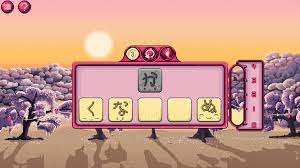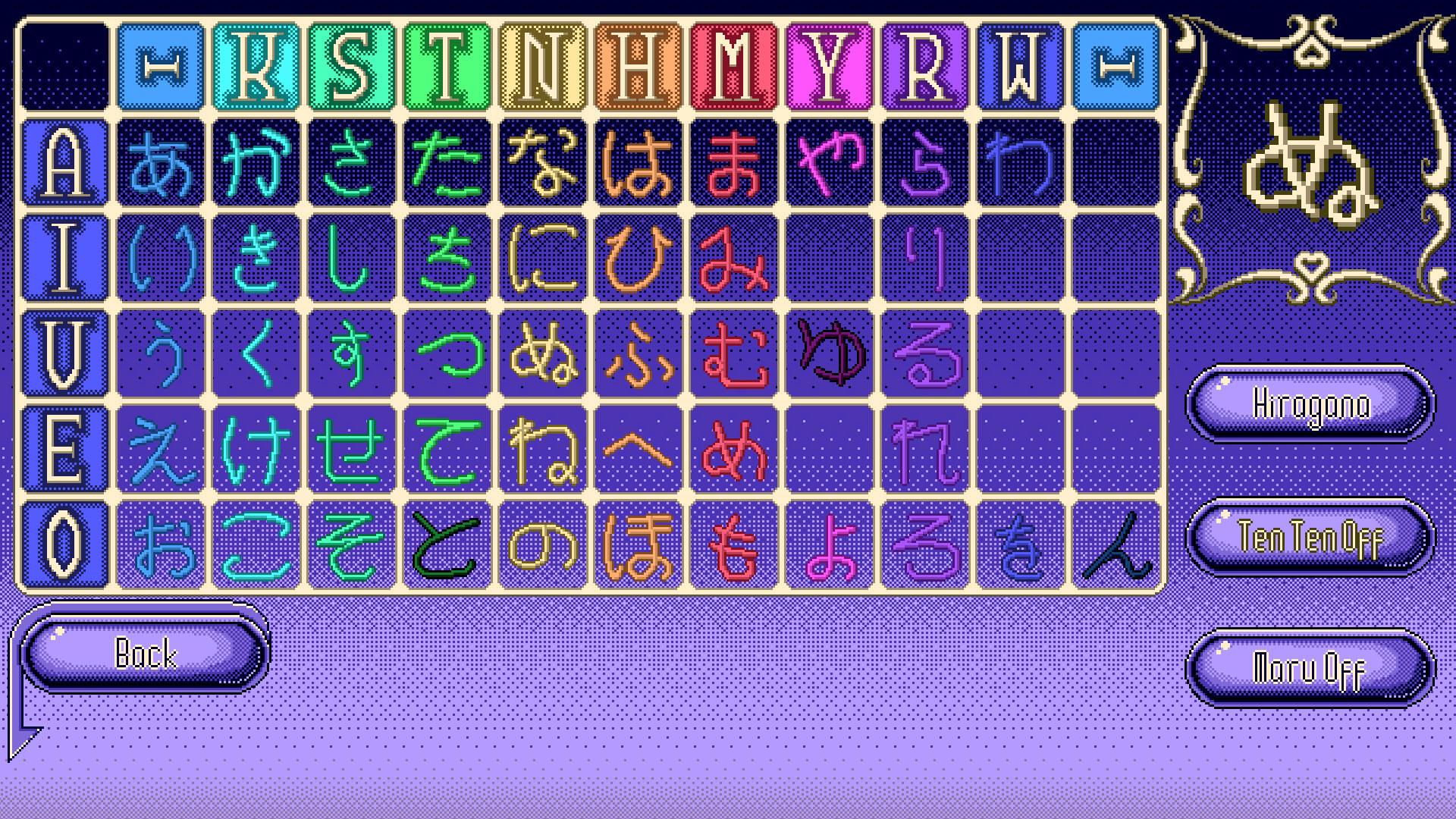Search
[{{{type}}}] {{{reason}}}
{{/data.error.root_cause}}{{{_source.title}}} {{#_source.showPrice}} {{{_source.displayPrice}}} {{/_source.showPrice}}
{{#_source.showLink}} {{/_source.showLink}} {{#_source.showDate}}{{{_source.displayDate}}}
{{/_source.showDate}}{{{_source.description}}}
{{#_source.additionalInfo}}{{#_source.additionalFields}} {{#title}} {{{label}}}: {{{title}}} {{/title}} {{/_source.additionalFields}}
{{/_source.additionalInfo}}- Details
- Category: Switch
- By Daniel Cullen
- Hits: 2142
Kana Quest (Switch)

Kana Quest
Developed By: Not Dead Design
Published By: Whitethorn Digital
Released: March 28, 2023
Available On: Microsoft Windows, Switch
Genre: Puzzle, Edutainment
ESRB Rating: Everyone
Number of Players: Singleplayer
Price: $14.99
I'd like to thank Whitethorn Digital for the review key to this title.
Gaming is not just a medium for "fun". It can also be used for education. There is, for this reason, a genre called "edutainment", or "educational entertainment". The game "Kana Quest" is a reasonably decent attempt at this.
First, a bit of background on "kana". Kana refers to the Japanese language, specifically the fact it is a syllabary, or a phonetic alphabet, meaning words are based on a combination of sounds. When written in the ideographic characters of the Japanese language, its various forms are katakana, hiragana, kanji (which shares overlap with Chinese and uses many similar characters), and romanji (converted to the Latin alphabet translations for the benefit of Western readers and speakers).
Kana Quest is designed to teach the first two simplest forms of their language, specifically katakana and hiragana. Much like real lessons given to Japanese schoolchildren, the game teaches both in the form of mnemonic memory match, where the symbol of the respective characters is to be matched with their sounds. This is done in repetition until the character and sound are permanently associated with each other in the mind of the student. Much like how the Latin alphabet is taught, Kana Quest is designed as a teaching aid for those aspiring to learn Japanese.

Strong Points: Good teaching aid for katakana and hiragana in the form of a memory match game
Weak Points: Poor controls tutorial; pricey
Moral Warnings: None
The concept of the gameplay is very simple. In a series of levels is a set of matching kana symbols, originally out of order. Using context provided by their sounds given in a pre-stage tutorial (and reviewable at any time by the selection of the symbols), you are supposed to shuffle the symbols around the board they are on till they all border matching kana. The less moves you take to accomplish this, the better your score. There are several "worlds" of increasing complexity to challenge your skill as you progress through the levels.
Graphically, this is a very simple game. Aside from the colorful backgrounds, it uses simple but distinct cards to show kana symbols and their sounds, and for their purpose, they are very distinct on the Switch. The interface is also quite simple but quite easy to read as well.
The sounds and music are nothing worth writing home about, being a mostly silent game aside from some digitized voiceovers for kana sounds. Given its focus on being educational and trying not to distract the player too much while doing the kana matches, this is by no means a mark against the quality of the game itself.
The only real weak point I have to complain about is the controls. The game can be controlled by touch or by buttons and the directional pad. While both control schemes are supported, it defaults to the touchpad controls for the tutorial. Worse, if you do not have a small stylus, they are not the easiest controls to manage with your fingers.

Higher is better
(10/10 is perfect)
Game Score - 80%
Gameplay - 16/20
Graphics - 8/10
Sound - 7/10
Stability - 5/5
Controls - 4/5
Morality Score - 100%
Violence - 10/10
Language - 10/10
Sexual Content - 10/10
Occult/Supernatural - 10/10
Cultural/Moral/Ethical - 10/10
As for the buttons and directional pad, while easy to intuit their function, the tutorial is quite unhelpful in explaining how they work. Once you've figured them out, though, the game is very easy to play in this manner, but it's still frustrating how little the tutorial covers this option.
Stability is rock solid. It's a very simple game with a very modest size and fast load times. It in no way taxes the Switch in any way I could discern.
Morally, this is a stainless game, its only content is to teach kana and their respective sounds, so it's safe for all ages as an educational game.
Overall, some weak control explanation aside, this is a fine, simplistic edutainment option for the aspiring Japanese student. The price is a bit high; I'd say it's worth half what they charge, but considering the niche market for games of this nature, still worth buying if you want a Kana teaching tool.








